The Project Gutenberg EBook of Northern California, Oregon, and the Sandwich Islands, by Charles Nordhoff This eBook is for the use of anyone anywhere at no cost and with almost no restrictions whatsoever. You may copy it, give it away or re-use it under the terms of the Project Gutenberg License included with this eBook or online at www.gutenberg.net Title: Northern California, Oregon, and the Sandwich Islands Author: Charles Nordhoff Release Date: August 19, 2004 [EBook #13222] Language: English Character set encoding: ISO-8859-1 *** START OF THIS PROJECT GUTENBERG EBOOK NORTHERN CALIFORNIA, OREGON, *** Produced by Ronald Holder and the Online Distributed Proofreading Team.
[Transcriber's Notes: The following words are noted as having changed between the publication of this book and the year 2004: 'Nuuanu Valley', versus 'Nuanu'; 'lei', vs. 'le' for a flower garland; 'holoku' vs. 'holaku' for a Hawaiian black dress; 'Wailua', vs. 'Waialua'; 'Kealakekua Bay' vs. 'Kealakeakua'; 'Kahului' vs. 'Kaului'; 'kuleana' vs. 'kuliana' for a small land-holding; 'kulolo' vs. 'kuulaau' for a taro pudding; 'piele' vs. 'paalolo' for a sweet-potato and coconut pudding; 'Koa' trees vs. 'Ko'; 'Sausalito' vs. 'Soucelito'; 'Klickitat', vs. 'Klikatat'; and 'Mount Rainier' vs. 'Mount Regnier'.
Also, in Chapter I, the author mis-stated information on taro fields; it should say that a square forty feet on each side will support a person for a year; this is equivalent to a square mile feeding 15,000.
An explanation of footnotes in the Appendix: The book has both footnotes at the bottom of each page, to which I assigned letters, and four pages of notes at the end of the Appendix. The latter includes comments by the translator in brackets, therefore these notes, which use numbers, will not be enclosed in the normal [Footnote: ] brackets to avoid any confusion. The lettered footnotes follow the numbered notes at the end.]
Also, in Chapter I, the author mis-stated information on taro fields; it should say that a square forty feet on each side will support a person for a year; this is equivalent to a square mile feeding 15,000.
An explanation of footnotes in the Appendix: The book has both footnotes at the bottom of each page, to which I assigned letters, and four pages of notes at the end of the Appendix. The latter includes comments by the translator in brackets, therefore these notes, which use numbers, will not be enclosed in the normal [Footnote: ] brackets to avoid any confusion. The lettered footnotes follow the numbered notes at the end.]
NORTHERN CALIFORNIA,
OREGON,
AND THESANDWICH ISLANDS.
BY CHARLES NORDHOFF,
AUTHOR OF
"CALIFORNIA: FOR HEALTH, PLEASURE, AND RESIDENCE," &c., &c.
NEW YORK:
HARPER & BROTHERS, PUBLISHERS,
FRANKLIN SQUARE.
1875.
Entered according to Act of Congress, in the year 1874, by
HARPER & BROTHERS,
In the Office of the Librarian of Congress, at Washington.
TO MY FRIENDS,
MR. AND MRS. HENRY A. DIKE,
OF BROOKLYN, N.Y.
PREFACE.
The favor with which my previous volume on California was received by the public induced me to prepare the present volume, which concerns itself, as the title sufficiently shows, with the northern parts of California, Oregon (including a journey through Washington Territory to Victoria, in Vancouver's Island), and the Sandwich Islands.
I have endeavored, as before, to give plain and circumstantial details, such as would interest and be of use to travelers for pleasure or information, and enable the reader to judge of the climate, scenery, and natural resources of the regions I visited; to give, in short, such information as I myself would like to have had in my possession before I made the journey.
Since this book went to press, Lunalilo, the King of the Sandwich Islands, has died of rapid consumption; and his successor is the Hon. David Kalakaua, a native chief, who has been prominent in the political affairs of the Islands, and was the rival of the late king after the death of Kamehameha V. Colonel Kalakaua is a man of education, of better physical stamina than the late king, of good habits, vigorous will, and a strong determination to maintain the independence of the Islands, in which he is supported by the people, who are of like mind with him on this point. His portrait is given on the next leaf.
CONTENTS.
HONOLULU AND THE ISLAND OF OAHU
HILO, WITH SOME VOLCANOES
MAUI, AND THE SUGAR CULTURE
KAUAI, WITH A GLANCE AT CATTLE AND SHEEP
THE HAWAIIAN AT HOME: MANNERS AND CUSTOMS
COMMERCIAL AND POLITICAL
THE LEPER ASYLUM ON MOLOKAI
NORTHERN CALIFORNIA:
ITS AGRICULTURAL VALLEYS, DAIRIES, FORESTS, FRUIT-FARMS, ETC.
THE SACRAMENTO VALLEY: A GENERAL VIEW, WITH HINTS TO TOURISTS AND SPORTSMEN
WINE AND RAISINS—PROFITS OF DRYING FRUITS
THE TULE LANDS AND LAND DRAINAGE
SHEEP-GRAZING IN NORTHERN CALIFORNIA
THE CHINESE AS LABORERS AND PRODUCERS
THE MENDOCINO COAST AND CLEAR LAKE—GENERAL VIEW
AN INDIAN RESERVATION
THE REDWOODS AND THE SAW-MILL COUNTRY OF MENDOCINO
DAIRY-FARMING IN CALIFORNIA
TEHAMA AND BUTTE, AND THE UPPER COUNTRY
TOBACCO CULTURE—WITH A NEW METHOD OR CURING THE LEAF
THE FARALLON ISLANDS
THE COLUMBIA RIVER AND PUGET SOUND—HINTS TO TOURISTS
APPENDIX.
CONTRIBUTIONS OF A VENERABLE SAVAGE TO THE ANCIENT HISTORY OF THE HAWAIIAN ISLANDS
ILLUSTRATIONS.
11. Dr. Judd
12. Dr. Coan
13. Bethel Church
14. Dr. Damon
21. A Hawaiian Chief
28. Hilo
29. Surf Bathing
38. Grass House
40. Lunalilo
41. Kamehameha I
51. Wine Vats
52. Training a Vine
54. Indian Rancheria
55. Piedras Blancas
65. Saw-Mill
74. Point Reyes
82. Sea-Lions
83. The Gull's Nest
95. The Taro Plant
NORTHERN CALIFORNIA, OREGON,
ANDTHE SANDWICH ISLANDS.
CHAPTER I.
HONOLULU AND THE ISLAND OF OAHU.
The Hawaiian group consists, as you will see on the map, of eleven islands, of which Hawaii is the largest and Molokini the smallest. The islands together contain about 6000 square miles; and Hawaii alone has an area of nearly 4000 square miles, Maui 620, Oahu (which contains Honolulu, the capital) 530, and Kauai 500. Lanai, Kahoolawe, Molokai, Niihau, Kaula, Lehua, and Molokini are small islands. All are of volcanic origin, mountainous, and Hawaii contains the largest active crater in the world—Kilauea—one of the craters of Mauna Loa; while Maui contains the largest known extinct crater, Haleakala, the House of the Sun—a pit thirty miles in circumference and two thousand feet deep. Mauna Loa and Mauna Kea are nearly 14,000 feet high, as high as Mount Grey in Colorado; and you can not ride anywhere in the islands without seeing extinct craters, of which the hill called Diamond Head, near Honolulu, is an example.
The voyage from San Francisco to Honolulu is now very comfortably made in one of the Pacific Mail Company's steamers, which plies regularly between the two ports, and makes a round trip once in every month. The voyage down to the Islands lasts from eight to nine days, and even to persons subject to sea-sickness is likely to be an enjoyable sea-journey, because after the second day the weather is charmingly warm, the breezes usually mild, and the skies sunny and clear. In forty-eight hours after you leave the Golden Gate, shawls, overcoats, and wraps are discarded. You put on thinner clothing. After breakfast you will like to spread rugs on deck and lie in the sun, fanned by deliciously soft winds; and before you see Honolulu you will, even in winter, like to have an awning spread over you to keep off the sun. When they seek a tropical climate, our brethren on the Pacific coast have to endure no such rough voyage as that across the Atlantic. On the way you see flying-fish, and if you are lucky an occasional whale or a school of porpoises, but no ships. It is one of the loneliest of ocean tracks, for sailing-vessels usually steer farther north to catch stronger gales. But you sail over the lovely blue of the Pacific Ocean, which has not only softer gales but even a different shade of color than the fierce Atlantic.
We made the land at daylight on the tenth day of the voyage, and by breakfast-time were steaming through the Molokai Channel, with the high, rugged, and bare volcanic cliffs of Oahu close aboard, the surf beating vehemently against the shore. An hour later we rounded Diamond Head, and sailing past Waikiki, which is the Long Branch of Honolulu charmingly placed amidst groves of cocoa-nut-trees, turned sharp about, and steamed through a narrow channel into the landlocked little harbor of Honolulu, smooth as a mill-pond.
It is not until you are almost within the harbor that you get a fair view of the city, which lies embowered in palms and fine tamarind-trees, with the tall fronds of the banana peering above the low-roofed houses; and thus the tropics come after all somewhat suddenly upon you; for the land which you have skirted all the morning is by no means tropical in appearance, and the cocoa-nut groves of Waikiki will disappoint you on their first and too distant view, which gives them the insignificant appearance of tall reeds. But your first view of Honolulu, that from the ship's deck, is one of the pleasantest you can get: it is a view of gray house-tops, hidden in luxuriant green, with a background of volcanic mountains three or four thousand feet high, and an immediate foreground of smooth harbor, gay with man-of-war boats, native canoes and flags, and the wharf, with ladies in carriages, and native fruit-venders in what will seem to you brightly colored night-gowns, eager to sell you a feast of bananas and oranges.
There are several other fine views of Honolulu, especially that from the lovely Nuanu Valley, looking seaward over the town, and one from the roof of the prison, which edifice, clean, roomy, and in the day-time empty because the convicts are sent out to labor on public works and roads, has one of the finest situations in the town's limits, directly facing the Nuanu Valley.
From the steamer you proceed to a surprisingly excellent hotel, which was built at a cost of about $120,000, and is owned by the government. You will find it a large building, affording all the conveniences of a first-class hotel in any part of the world. It is built of a concrete stone made on the spot, of which also the new Parliament House is composed; and as it has roomy, well-shaded court-yards and deep, cool piazzas, and breezy halls and good rooms, and baths and gas, and a billiard-room, you might imagine yourself in San Francisco, were it not that you drive in under the shade of cocoa-nut, tamarind, guava, and algeroba trees, and find all the doors and windows open in midwinter; and ladies and children in white sitting on the piazzas.
It is told in Honolulu that the building of this hotel cost two of the late king's cabinet, Mr. Harris and Dr. Smith, their places. The Hawaiian people are economical, and not very enterprising; they dislike debt, and a considerable part of the Hawaiian national debt was contracted to build this hotel. You will feel sorry for Messrs. Harris and Smith, who were for many years two of the ablest members of the Hawaiian cabinet, but you will feel grateful for their enterprise also, when you hear that before this hotel was completed—that is to say, until 1871—a stranger landing in Honolulu had either to throw himself on the hospitality of the citizens, take his lodgings in the Sailors' Home, or go back to his ship. It is not often that cabinet ministers fall in so good a cause, or incur the public displeasure for an act which adds so much to the comfort of mankind.
The mercury ranges between 68° and 81° in the winter months and between 75° and 86° during the summer, in Honolulu. The mornings are often a little overcast until about half-past nine, when it clears away bright. The hottest part of the day is before noon. The trade-wind usually blows, and when it does it is always cool; with a south wind; it is sometimes sultry, though the heat is never nearly so oppressive as in July and August in New York. In fact, a New Yorker whom I met in the Islands in August congratulated himself as much on having escaped the New York summer as others did on having avoided the winter.
The nights are cool enough for sound rest, but not cold.
It is not by any means a torrid climate, and it has, perhaps, the fewest daily extremes of any pleasant climate in the world. For instance, the mercury ranged in January between 69° at 7 A.M., 75½° at 2 P.M., and 71½° at 10 P.M. The highest temperature in that month was 78°, and the lowest 68°. December and January are usually the coolest months in the year at Honolulu, but the variation is extremely slight for the whole year, the maximum of the warmest day in July (still at Honolulu) being only 86°, and this at noon, and the lowest mark being 62°, in the early morning in December. A friend of mine resident during twenty years in the Islands has never had a blanket in his house.
It is said that the climate is an excellent one for consumptives, and physicians here point to numerous instances of the kindly and healing effect of the mild air. At the same time, I suspect it must in the long-run be a little debilitating to Americans. It is a charming climate for children; and as sea-bathing is possible and pleasant at all times, those who derive benefit from this may here enjoy it to the fullest extent during all the winter months as well as in the summer.
Of course you wear thin, but not the thinnest, clothing. White is appropriate to the climate; but summer flannels are comfortable in winter. The air is never as sultry as in New York in July or August, and the heat is by no means oppressive, there being almost always a fresh breeze. Honolulu has the reputation of being the hottest place on the islands, and a walk through its streets at midday quickly tires one; but in a mountainous country like this you may choose your temperature, of course. The summits of the highest peaks on Hawaii are covered with almost perpetual snow; and there are sugar planters who might sit around a fire every night in the year.
Unlike California, the Islands have no special rainy season, though rain is more abundant in winter than during the summer months. But the trade-wind, which is also the rain-wind, greatly controls the rain-fall; and it is useful for visitors to bear in mind that on the weather side of every one of the Islands—that side exposed to the wind—rains are frequent, while on the lee side the rain-fall is much less, and in some places there is scarcely any. Thus an invalid may get at will either a dry or moist climate, and this often by moving but a few miles. Not only is it true that at Hilo it sometimes rains for a month at a time, while at Lahaina they have a shower only about once in eighteen months; but you may see it rain every day from the hotel piazza in Honolulu, though you get not a drop in the city itself; for in the Nuanu and Manoa valleys there are showers every day in the year—the droppings of fragments of clouds which have been blown over the mountain summits; and if you cross the Pali to go the windward side of the island, though you set out from Honolulu amidst brilliant sunshine which will endure there all day unchanged, you will not ride three miles without needing a mackintosh. But the residents, knowing that during the greater part of the year the showers are light and of brief duration, take no precautions against them; and indeed an island shower seems to be harmless to any one but an invalid, for it is not a climate in which one easily "takes cold."
The very slight changes in temperature between day and night make the climate agreeable, and I think useful, to persons in tender health. But I do not believe it can be safely recommended for all cases of consumption. If the patient has the disease fully developed, and if it has been caused by lack of nutrition, I should think the island air likely to be insufficiently bracing. For persons who have "weak lungs" merely, but no actual disease, it is probably a good and perfectly safe climate; and if sea-bathing is part of your physician's prescription, it can, as I said before, be enjoyed in perfection here by the tenderest body all the year round.
Honolulu, being the capital of the kingdom, contains the government offices; and you will perhaps be surprised, as I was, to find an excellent public hospital, a reform school, and other proper and well-managed charities. When you have visited these and some of the numerous schools and the native churches, and have driven or ridden to Waikiki for a sea-bath, and have seen the Nuanu Valley and the precipice called the Pali, if you are American, and familiar with New England, it will be revealed to you that the reason why all the country looks so familiar to you is that it is really a very accurate reproduction of New England country scenery. The white frame houses with green blinds, the picket-fences whitewashed until they shine, the stone walls, the small barns, the scanty pastures, the little white frame churches scattered about, the narrow "front yards," the frequent school-houses, usually with but little shade: all are New England, genuine and unadulterated; and you have only to eliminate the palms, the bananas, and other tropical vegetation, to have before you a fine bit of Vermont or the stonier parts of Massachusetts. The whole scene has no more breadth nor freedom about it than a petty New England village, but it is just as neat, trim, orderly, and silent also. There is even the same propensity to put all the household affairs under one roof which was born of a severe climate in Massachusetts, but has been brought over to these milder suns by the incorrigible Puritans who founded this bit of civilization.
In fact, the missionaries have left an indelible mark upon these islands. You do not need to look deep to know that they were men of force, men of the same kind as they who have left an equally deep impress upon so large a part of our Western States; men and women who had formed their own lives according to certain fixed and immutable rules, who knew no better country than New England, nor any better ways than New England ways, and to whom it never occurred to think that what was good and sufficient in Massachusetts was not equally good and fit in any part of the world. Patiently, and somewhat rigorously, no doubt, they sought from the beginning to make New England men and women of these Hawaiians; and what is wonderful is that, to a large extent, they have succeeded.
As you ride about the suburbs of Honolulu, and later as you travel about the islands, more and more you will be impressed with a feeling of respect and admiration for the missionaries. Whatever of material prosperity has grown up here is built on their work, and could not have existed but for their preceding labors; and you see in the spirit of the people, in their often quaint habits, in their universal education, in all that makes these islands peculiar and what they are, the marks of the Puritans who came here but fifty years ago to civilize a savage nation, and have done their work so thoroughly that, even though the Hawaiian people became extinct, it would require a century to obliterate the way-marks of that handful of determined New England men and women.
Their patient and effective labors seem to me, now that I have seen the results, to have been singularly undervalued at home. No intelligent American can visit the islands and remain there even a month, without feeling proud that the civilization which has here been created in so marvelously short a time was the work of his country men and women; and if you make the acquaintance of the older missionary families, you will not leave them without deep personal esteem for their characters, as well as admiration of their work. They did not only form a written language for the Hawaiian race, and painfully write for them school-books, a dictionary, and a translation of the Scriptures and of a hymn-book; they did not merely gather the people in churches and their children into schools; but they guided the race, slowly and with immense difficulty, toward Christian civilization; and though the Hawaiian is no more a perfect Christian than the New Yorker or Massachusetts man, and though there are still traces of old customs and superstitions, these missionaries have eradicated the grosser crimes of murder and theft so completely, that even in Honolulu people leave their houses open all day and unlocked all night, without thought of theft; and there is not a country in the world where the stranger may travel in such absolute safety as in these islands.
The Hawaiian, or Sandwich Islands, were discovered—or rediscovered, as some say—by Captain Cook, in January, 1778, a year and a half after our Declaration of Independence. The inhabitants were then what we call savages—that is to say, they wore no more clothing than the climate made necessary, and knew nothing of the Christian religion. In the period between 1861 and 1865 this group had in the Union armies a brigadier-general, a major, several other officers, and more than one hundred private soldiers and seamen, and its people contributed to the treasury of the Sanitary Commission a sum larger than that given by most of our own States.
In 1820 the first missionaries landed on the shores of these islands, and Mrs. Lucy G. Thurston, one of those who came in that year, still lives, a bright, active old lady, with a shrewd wit of her own. Thirty-three years afterward, in 1853, the American Board of Missions determined that "the Sandwich Islands, having been Christianized, shall no longer receive aid from the Board;" and in this year, 1873, the natives of these islands are, there is reason to believe, the most generally educated people in the world. There is scarcely a Hawaiian—man, woman, or child—of suitable age but can both read and write. All the towns and many country localities possess substantial stone or, more often, framed churches, of the oddest New England pattern; and a compulsory education law draws every child into the schools, while a special tax of two dollars on every voter, and an additional general tax, provide schools and teachers for all the children and youth.
Nine hundred and three thousand dollars were given by Christian people in the United States during thirty-five years to accomplish this result; and to-day the islands themselves support a missionary society, which sends the Gospel in the hands of native missionaries into other islands at its own cost, and not only supports more than a dozen "foreign" missionaries, but translates parts of the Bible into other Polynesian tongues.
Nor was exile from their homes and kindred the only privation the missionaries suffered. They came among a people so vile that they had not even a conception of right and wrong; so prone to murder and pillage that the first Kamehameha, the conqueror, gave as excuse for his conquest that it was necessary to make the paths safe; so debauched in their common conversation that the earlier missionaries were obliged for years rigidly to forbid their own children not only from acquaintance with the natives among whom they lived, but even from learning the native language, because to hear only the passing speech of their neighbors was to suffer the grossest contamination.
Of those who began this good work but few now remain. Most of them have gone to their reward, having no doubt suffered, as well as accomplished, much. Of the first band who came out from the United States, the only one living in 1873 is Mrs. Lucy G. Thurston, a bright, active, and lively old lady of seventy-five years, who drives herself to church on Sundays in a one-horse chaise, and has her own opinions of passing events. How she has lived in the tropics for fifty years without losing even an atom of the New England look puzzles you; but it shows you also the strength which these people brought with them, the tenacity with which they clung to their habits of dress and living and thought, the remorseless determination which they imported, with their other effects, around Cape Horn.
Then there was Dr. Judd, who has died since these lines were written, who came out as physician to the mission, and proved himself in the islands, as the world knows, a very able man, with statesmanship for some great emergencies which made him for years one of the chief advisers of the Hawaiian kings. It was to me a most touching sight to see, on a Sunday after church, Mrs. Thurston, his senior by many years but still alert and vigorous, taking hold of his hand and tenderly helping him out of the church and to his carriage.
And in Hilo, when you go to visit the volcano, you will find Dr. Coan, one of the brightest and loveliest spirits of them, all, the story of whose life in the remote island whose apostle he was, is as wonderful and as touching as that of any of the earlier apostles, and shows what great works unyielding faith and love can do in redeeming a savage people. When Dr. and Mrs. Coan came to the island of Hawaii, its shores and woods were populous; and through their labors and those of the Reverend Mr. Lyman and one or two others, thousands of men and women were instructed in the truths of Christianity, inducted into civilized habits of life, and finally brought into the church.
As you sail along the green coast of Hawaii from its northern point to Hilo, you will be surprised at the number of quaint little white churches which mark the distances almost with the regularity of mile-stones; if, later, you ride through this district or the one south of Hilo, you will see that for every church there is also a school-house; you will see native children reading and writing as well as our own at home; you may hear them singing tunes familiar in our own Sunday-schools; you will see the native man and woman sitting down to read their newspaper at the close of day; and if you could talk with them, you would find they knew almost as much about our late war as you do, for they took an intense interest in the war of the rebellion. And you must remember that when, less than forty years ago, Dr. and Mrs. Coan came to Hilo, the people were naked savages, with but one church and one school-house in the district, and almost without printed books or knowledge of reading. They flocked to hear the Gospel. Thousands removed from a distance to Hilo, where, in their rapid way, they built up a large town, and kept up surely the strangest "protracted meeting" ever held; and going back to their homes after many months, they took with them knowledge and zeal to build up Christian churches and schools of their own.
Over these Dr. Coan has presided these many years; not only preaching regularly on Sundays and during the week in the large native church at Hilo, and in two or three neighboring churches, but visiting the more distant churches at intervals to examine and instruct the members, and keep them all on the right track. He has seen a region very populous when he first came to it decrease until it has now many more deserted and ruined house-places than inhabited dwellings; but, also, he has seen a great population turned from darkness to light, a considerable part of it following his own blameless and loving life as an example, and very many living to old age steadfast and zealous Christians.
On your first Sunday at Honolulu you will probably attend one or other of the native churches. They are commodious buildings, well furnished; and a good organ, well played, will surprise you. Sunday is a very quiet day in the Islands: they are a church-going people, and the empty seats in the Honolulu native churches give you notice of the great decrease in population since these were built.
If you go to hear preaching in your own language, it will probably be to the Seamen's Chapel where the Rev. Mr. Damon preaches—one of the oldest and one of the best-known residents of Honolulu. This little chapel was brought around Cape Horn in pieces, in a whale-ship many years ago, and was, I believe, the first American church set up in these islands. It is a curious old relic, and has seen many changes. Mr. Damon has lived here since 1846 a most zealous and useful life as seamen's chaplain. He is, in his own field, a true and untiring missionary, and to his care the port owes a clean and roomy Seamen's Home, a valuable little paper, The Friend, which was for many years the chief reading of the whalemen who formerly crowded the ports of Hawaii; and help in distress, and fatherly advice, and unceasing kindness at all times to a multitude of seamen during nearly thirty years. The sailors, who quickly recognize a genuine man, have dubbed him "Father Damon;" and he deserves, what he has long had, their confidence and affection.
The charitable and penal institutions of Honolulu are quickly seen, and deserve a visit. They show the care with which the Government has looked after the welfare of the people. The Queen's Hospital is an admirably kept house. At the Reform School you will see a number of boys trained and educated in right ways. The prison not only deserves a visit for itself, but from its roof you obtain, as I said before, one of the best views of Honolulu and the adjacent country and ocean.
Then there are native schools, elementary and academic, where you will see the young Hawaiian at his studies, and learn to appreciate the industry and thoroughness with which education is carried on all over these islands. You will see also curious evidence of the mixture of races here; for on the benches sit, and in the classes recite, Hawaiian, Chinese, Portuguese, half white and half Chinese children; and the little pig-tailed Celestial reads out of his primer quite as well as any.
In the girls' schools you will see an occasional pretty face, but fewer than I expected to see; and to my eyes the Hawaiian girl is rarely very attractive. Among the middle-aged women, however, you often meet with fine heads and large, expressive features. The women have not unfrequently a majesty of carriage and a tragic intensity of features and expression which are quite remarkable. Their loose dress gives grace as well as dignity to their movements, and whoever invented it for them deserves more credit than he has received. It is a little startling at first to see women walking about in what, to our perverted tastes, look like calico or black stuff night-gowns; but the dress grows on you as you become accustomed to it; it lends itself readily to bright ornamentation; it is eminently fit for the climate; and a stately Hawaiian dame, marching through the street in black holaku—as the dress is called—with a long necklace, or le, of bright scarlet or brilliant yellow flowers, bare and untrammeled feet, and flowing hair, surmounted often by a low-crowned felt hat, compares very favorably with a high-heeled, wasp-waisted, absurdly-bonneted, fashionable white lady.
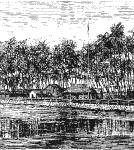
Cocoa-Nut Grove, and Residence of the Late King Kamehameha V., at Waikiki, Oahu
Click Thumbnail for full-size Illustration
As you travel through the country, you see not unfrequently one of the tall, majestic, large women, who were formerly, it is said by old residents, more numerous than now. I have been assured by several persons that the race has dwindled in the last half century; and all old residents speak with admiration of the great stature and fine forms of the chiefs and their wives in the early days. It does not appear that these chiefs were a distinct race, but they were despotic rulers of the common people; and their greater stature is attributed by those who should know to their being nourished on better food, and to easier circumstances and more favorable surroundings.
When you have seen Honolulu and the Nuanu Valley, and bathed and drunk cocoa-nut milk at Waikiki, you will be ready for a charming excursion—the ride around the Island of Oahu. For this you should take several days. It is most pleasantly made by a party of three or four persons, and ladies, if they can sit in the saddle at all, can very well do it. You should provide yourself with a pack-mule, which will carry not only spare clothing but some provisions; and your guide ought to take care of your horses and be able, if necessary, to cook you a lunch. The ride is easily done in four days, and you will sleep every night at a plantation or farm. The roads are excellent for riding, and carriages have made the journey. It is best to set out by way of Pearl River and return by the Pali, as thus you have the trade-wind in your face all the way. If you are accustomed to ride, and can do thirty miles a day, you should sleep the first night at or near Waialua, the next at or near what is called the Mormon Settlement, and on the third day ride into Honolulu.
If ladies are of your party, and the stages must be shorter, you can ride the first day to Ewa, which is but ten miles; the next, to Waialua, eighteen miles further; the third, to the neighborhood of Kahuku, twelve miles; thence to Kahana, fifteen miles; thence to Kaalaea, twelve miles; and the next day carries you, by an easy ride of thirteen miles, into Honolulu. Any one who can sit on a horse at all will enjoy this excursion, and receive benefit from it; the different stages of it are so short that each day's work is only a pleasure. On the way you will see, near Ewa, the Pearl Lochs, which it has recently been proposed to cede as a naval station to the United States; and near Waialua an interesting boarding-school for Hawaiian girls, in which they are taught not only in the usual school studies, but in sewing, and the various arts of the housewife. If you are curious to see the high valley in which the famous Waialua oranges are grown, you must take a day for that purpose. Between Kahuku and Kahana it is worth while to make a detour into the mountains to see the Kaliawa Falls, which are a very picturesque sight. The rock, at a height of several hundred feet, has been curiously worn by the water into the shape of a canoe. Here, also, the precipitous walls are covered with masses of fine ferns. At Kahana, and also at Koloa, you will see rice-fields, which are cultivated by Chinese. You pass also on your road several sugar-plantations; and if it is the season of sugar-boiling, you will be interested in this process. For miles you ride along the sea-shore, and your guide will lead you to proper places for a midday bath, preliminary to your lunch.
After leaving the Mormon Settlement, the scenery becomes very grand—it is, indeed, as fine as any on the Islands, and compares well with any scenery in the world. That it can be seen without severe toil gives it, for such people as myself, no slight advantage over some other scenery in these Islands and elsewhere, access to which can be gained only by toilsome and disagreeable journeys. There is a blending of sea and mountain which will dwell in your memory as not oppressively grand, and yet fine enough to make you thankful that Providence has made the world so lovely and fair.
As you approach the Pali, the mountain becomes a sheer precipice for some miles, broken only by the gorge of the Pali, up which, if you are prudent, you will walk, letting your horses follow with the guide—though Hawaiian horsemen ride both up and down, and have been known to gallop down the stone-paved and slippery steep. As you look up at these tall, gloomy precipices, you will see one of the peculiarities of a Sandwich Island landscape. The rocks are not bare, but covered from crown to base with moss and ferns; and these cling so closely to the surface that to your eye they seem to be but a short, close-textured green fuzz. In fact, these great rocks, thus adorned, reminded me constantly of the rock scenery in such operas as Fra Diavolo; the dark green being of a shade which I do not remember to have seen before in nature, though it is not uncommon in theatrical scenery.
The grass remains green, except in the dry districts, all the year round; and the common grass of the Islands is the maniania, a fine creeping grass which covers the ground with a dense velvety mat; and where it is kept short by sheep makes an admirable springy lawn. It has a fine deep color and bears drought remarkably well; and it is the favorite pasture grass of the Islands. I do not think it as fattening as the alfilleria of Southern California or our own timothy or blue grass; but it is a valuable grass to the stockmen, because it eats out every other and less valuable kind.
On your journey around Oahu you need a guide who can speak some English; you must take with you on the pack-mule provisions for the journey; and it is well to have a blanket for each of your party. You will sleep each night in a native house, unless, as is very likely to be the case, you have invitations to stop at plantation houses on your way. At the native houses they will kill a chicken for you, and cook taro; but they have no other supplies. You can usually get cocoa-nuts, whose milk is very wholesome and refreshing. The journey is like a somewhat prolonged picnic; the air is mild and pure; and you need no heavy clothing, for you are sure of bright sunny weather.
For your excursions near Honolulu, and for the adventure I have described, you can hire horses; though if you mean to stay a month or two it is better to buy. A safe and good horse, well saddled and bridled, brought to you every morning at the hotel, costs you a dollar a day. In that case you have no care or responsibility for the animal. But unless there are men-of-war in port you can buy a sufficiently good riding-horse for from twelve to twenty-five dollars, and get something of your investment back when you leave; and you can buy saddles and all riding-gear cheaply in Honolulu. The maintenance of a horse in town costs not over fifty cents per day.
Your guide for a journey ought to cost you a dollar a day, which includes his horse; when you stop for the day he unsaddles your horses and ties them out in a grass-field where they get sufficient nourishment. For your accommodation at a native house, you ought to pay fifty cents for each person of your party, including the guide. The proprietor of the Honolulu hotel is very obliging and readily helps you to make all arrangements for horses and guides; and if you have brought any letters of introduction, or make acquaintances in the place, you will find every body ready to assist you. Riding is the pleasantest way of getting about; but on Oahu the roads are sufficiently good to drive considerable distances, and carriages are easily obtainable.
One of the pleasant surprises which meet a northern traveler in these islands is the number of strange dishes which appear on the table and in the bill of fare. Strawberries, oranges—the sweetest and juiciest I have eaten anywhere, except perhaps in Rio de Janeiro—bananas and cocoa-nuts, you have at will; but besides these there are during the winter months the guava, very nice when it is sliced like a tomato and eaten with sugar and milk; taro, which is the potato of the country and, in the shape of poi, the main subsistence of the native Hawaiian; bread-fruit; flying-fish, the most tender and succulent of the fish kind; and, in their season, the mango, the custard-apple, the alligator-pear, the water-melon, the rose-apple, the ohia, and other fruits.
Taro, when baked, is an excellent and wholesome vegetable, and from its leaves is cooked a fine substitute for spinach, called luau. Poi also appears on your hotel table, being the national dish, of which many foreigners have become very fond. It is very fattening and easily digested, and is sometimes prescribed by physicians to consumptives. As you drive about the suburbs of Honolulu you will see numerous taro patches, and may frequently see the natives engaged in the preparation of poi, which consists in baking the root or tuber in underground ovens, and then mashing it very fine, so that if dry it would be a flour. It is then mixed with water, and for native use left to undergo a slight fermentation. Fresh or unfermented poi has a pleasant taste; when fermented it tastes to me like book-binder's paste, and a liking for it must be acquired rather than natural, I should say, with foreigners.
So universal is its use among the natives that the manufacture of poi is carried on now by steam-power and with Yankee machinery, for the sugar planters; and the late king, who was avaricious and a trader, incurred the dislike of his native subjects by establishing a poi-factory of his own near Honolulu. Poi is sold in the streets in calabashes, but it is also shipped in considerable quantities to other islands, and especially to guano islands which lie southward and westward of this group. On these lonely islets, many of which have not even drinking-water for the laborers who live on them, poi and fish are the chief if not the only articles of food. The fish, of course, are caught on the spot, but poi, water, salt, and a few beef cattle for the use of the white superintendents are carried from here.
Taro is a kind of arum. It grows, unlike any other vegetable I know of unless it be rice, entirely under water. A taro patch is surrounded by embankments; its bottom is of puddled clay; and in this the cutting, which is simply the top of the plant with a little of the tuber, is set. The plants are set out in little clumps in long rows, and a man at work in a taro patch stands up to his knees in water. Forty square feet of taro, it is estimated, will support a person for a year, and a square mile of taro will feed over 15,000 Hawaiians.
By-the-way, you will hear the natives say kalo when they speak of taro; and by this and other words in common use you will presently learn of a curious obliquity in their hearing. A Hawaiian does not notice any difference in the sounds of r and l, of k and t, or of b, p, and f. Thus the Pali, or precipice near Honolulu, is spoken of as the Pari; the island of Kauai becomes to a resident of it Tauwai, though a native of Oahu calls it Kauai; taro is almost universally called kalo; and the common salutation, Aloha, which means "Love to you," and is the national substitute for "How do you do?" is half the time Aroha; Lanai is indifferently called Ranai; and Mauna Loa is in the mouths of most Hawaiians Mauna Roa. Indeed, in the older charts the capital of the kingdom is called Honoruru.
Society in Honolulu possesses some peculiar features, owing in part to the singularly isolated situation of this little capital, and partly to the composition of the social body. Honolulu is a capital city unconnected with any other place in the world by telegraph, having a mail once a month from San Francisco and New Zealand, and dependent during the remainder of the month upon its own resources. To a New Yorker, who gets his news hot and hot all day and night, and can't go to sleep without first looking in at the Fifth Avenue Hotel to hear the latest item, this will seem deplorable enough; but you have no idea how charming, how pleasant, how satisfactory it is for a busy or overworked man to be thus for a while absolutely isolated from affairs; to feel that for a month at least the world must get on without your interfering hand; and though you may dread beforehand this enforced separation from politics and business, you will find it very pleasant in the actual experience.
As you stand upon the wharf in company with the élite of the kingdom to watch the steamer depart, a great burden falls from your soul, because for a month to come you have not the least responsibility for what may happen in any part of the planet. Looking up at the black smoke of the departing ship, you say to yourself, "Who cares?" Let what will happen, you are not responsible. And so, with a light heart and an easy conscience, you get on your horse (price $15), and about the time the lady passengers on the steamer begin to turn green in face, you are sitting down on a spacious lanai or veranda, in one of the most delightful sea-side resorts in the world, with a few friends who have determined to celebrate by a dinner this monthly recurrence of their non-intercourse with the world.
The people are surprisingly hospitable and kind and know how to make strangers at home; they have leisure, and know how to use it pleasantly; the climate controls their customs in many respects, and nothing is pursued at fever heat as with us. What strikes you, when you have found your way into Honolulu society and looked around, is a certain sensible moderation and simplicity which is in part, I suspect, a remainder of the old missionary influence; there is a certain amount of formality, which is necessary to keep society from deteriorating, but there is no striving after effect; there are, so far as a stranger discovers, no petty cliques or cabals or coteries, and there is a very high average of intelligence: they care about the best things.
They know how to dine; and having good cooks and sound digestions, they add to these one requisite to pleasant dining which some more pretentious societies are without: they have leisure. Nothing is done in haste in Honolulu, where they have long ago convinced themselves that "to-morrow is another day." Moreover, you find them well-read, without being blue; they have not muddled their history by contradictory telegraphic reports of matters of no consequence; in fact, so far as recent events are concerned, they stand on tolerably firm ground, having perused only the last monthly record of current events. Consequently, they have had time to read and enjoy the best books; to follow with an intelligent interest the most notable passing events; and as most of them come from families or have lived among people who have had upon their own shoulders some conscious share of government, political, moral, or religious, these talkers are not pedantic, but agreeable. As to the ladies, you find them charming; beautifully dressed, of course, but they have not given the whole day and their whole minds to the dress; they are cheerful, easily excited to gayety, long accustomed to take life easily, and eating as though they did not know what dyspepsia was.
Indeed, when you have passed a month in the Islands you will have a better opinion of idleness than you had before, though in some respects the odd effects of a tropical climate will hardly meet your approval. Euchre, for instance, takes the place here which whist holds elsewhere as the amusement of sensible people.
Finally, society in Honolulu is respectable. It is fashionable to be virtuous, and if you were "fast," I think you would conceal it. The Government has always encouraged respectability, and discountenanced vice. The men who have ruled the Islands—not the missionaries alone, but the political rulers since—have been plain, honest, and, in the main, wise men; and they have kept politics respectable in the little monarchy. The disreputable adventurer element which degrades our politics, and invades society too, is not found here. You will say the rewards are not great enough to attract this vile class. Perhaps not; but at any rate it is not there; and I do not know, in short, where else in the world you would find so kindly, so gracefully hospitable, and, at the same time, so simple and enjoyable a society as that of Honolulu.
No one can visit the Islands without being impressed by the boundless hospitality of the sugar planters, who, with their superintendents and managers, form, away from the few towns, almost the only white inhabitants. Hospitality so free-handed is, I suspect, found in few other parts of the world. Though Honolulu has now a commodious hotel, the residents keep up their old habits of graceful welcome to strangers. The capital has an excellent band, which plays in public places several times a week; and it does not lack social entertainments, parties, and dinners, to break the monotony of life. Not only the residents of foreign birth, but a few Hawaiians also, people of education, culture, and means, entertain gracefully and frequently.
As for the common people, they are by nature or long custom, or both, as kindly and hospitable as men can be. If you ask for lodgings at night-fall at a native hut, you are received as though you were conferring a favor; frequently the whole house, which has but one room, is set apart for you, the people going elsewhere to sleep; a chicken is slain in your honor, and for your exclusive supper; and you are served by the master of the house himself. The native grass-house, where it has been well built, is a very comfortable structure. It has but a single room, calico curtains serving as partitions by night; at one end a standing bed-place, running across the house, provides sleeping accommodations for the whole family, however numerous. This bed consists of mats; and the covers are either of tapa cloth—which is as though you should sleep under newspapers—or of blankets. The more prosperous people have often, besides this, an enormous bedstead curtained off and reserved for strangers; and you may see the women take out of their chests, when you ask hospitality, blankets, sheets, and a great number of little pillows for the bed, as well as often a brilliant silk coverlet; for this bed appears to be like a Cape Cod parlor—for ornament rather than use. The use of the dozen little pillows puzzled me, until I found that they were intended to tuck or wedge me in, so that I should not needlessly and uncomfortably roll about the vast bed. They were laid at the sides, and I was instructed to "chock" myself with them. On leaving, do not inquire what is the cost of your accommodations. The Hawaiian has vague ideas about price. He might tell you five or ten dollars; but if you pay him seventy-five cents for yourself and your guide, he will be abundantly and thoroughly satisfied.


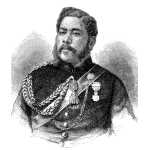
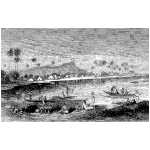
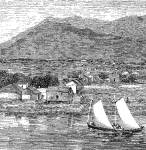
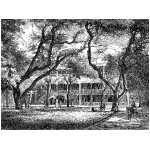
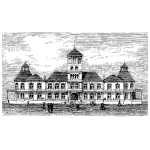
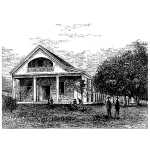
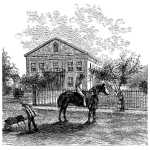
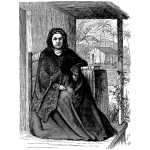
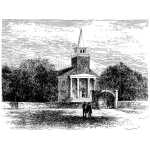
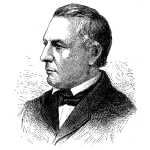
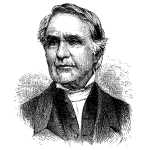
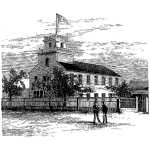
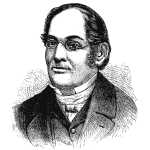
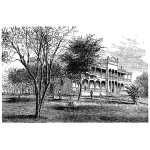
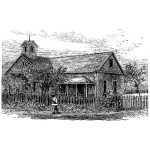
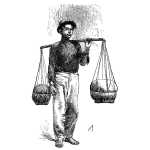
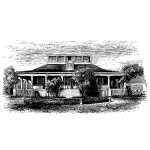
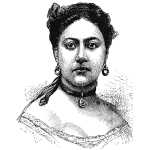
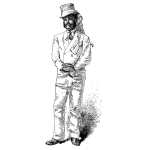
No comments:
Post a Comment